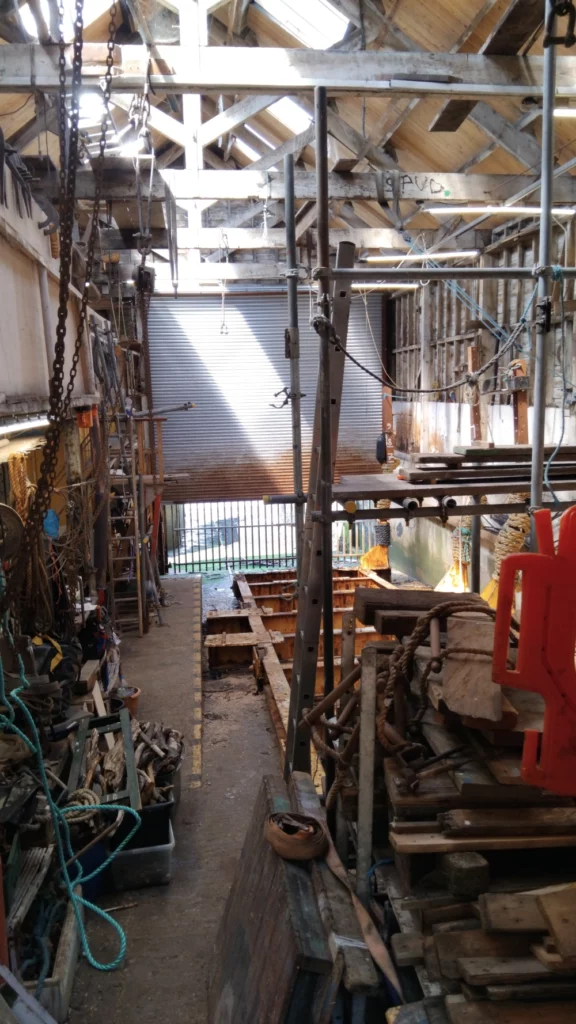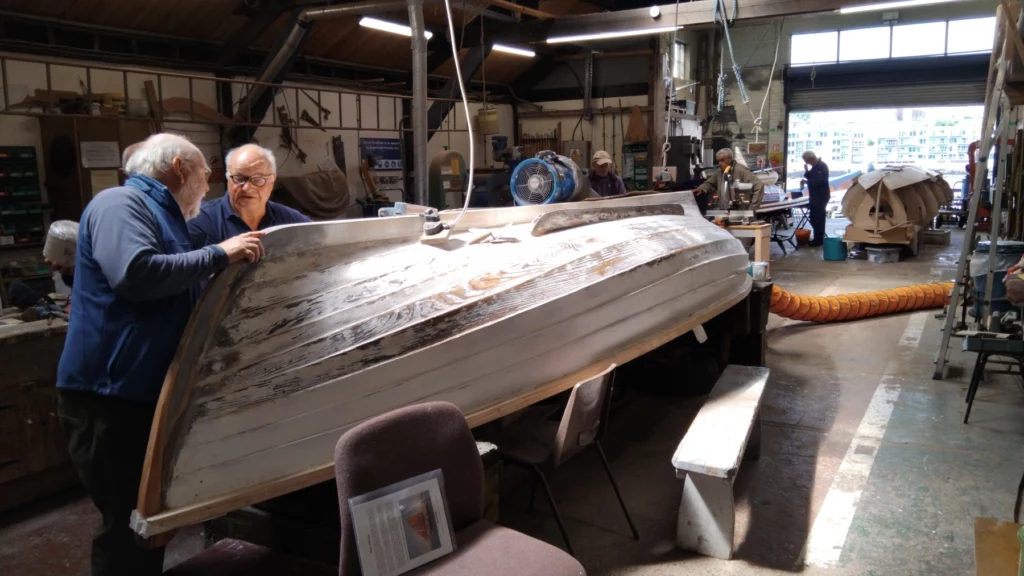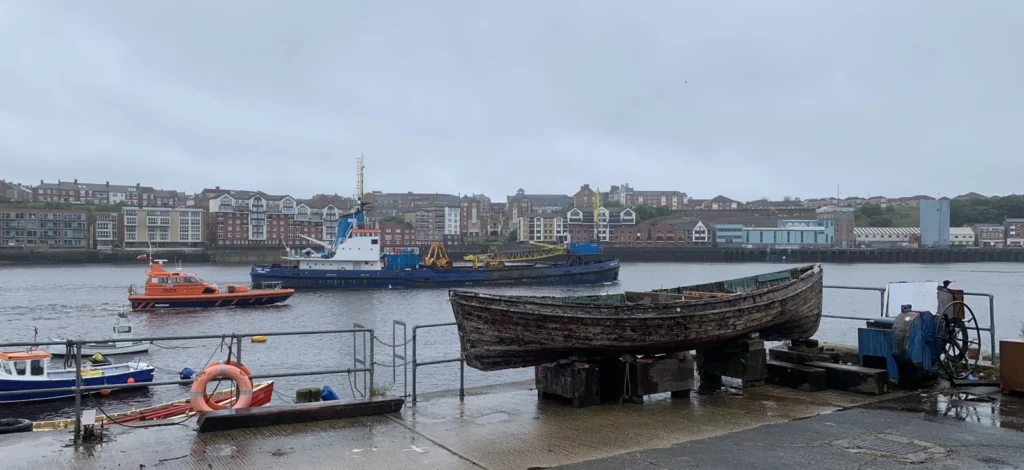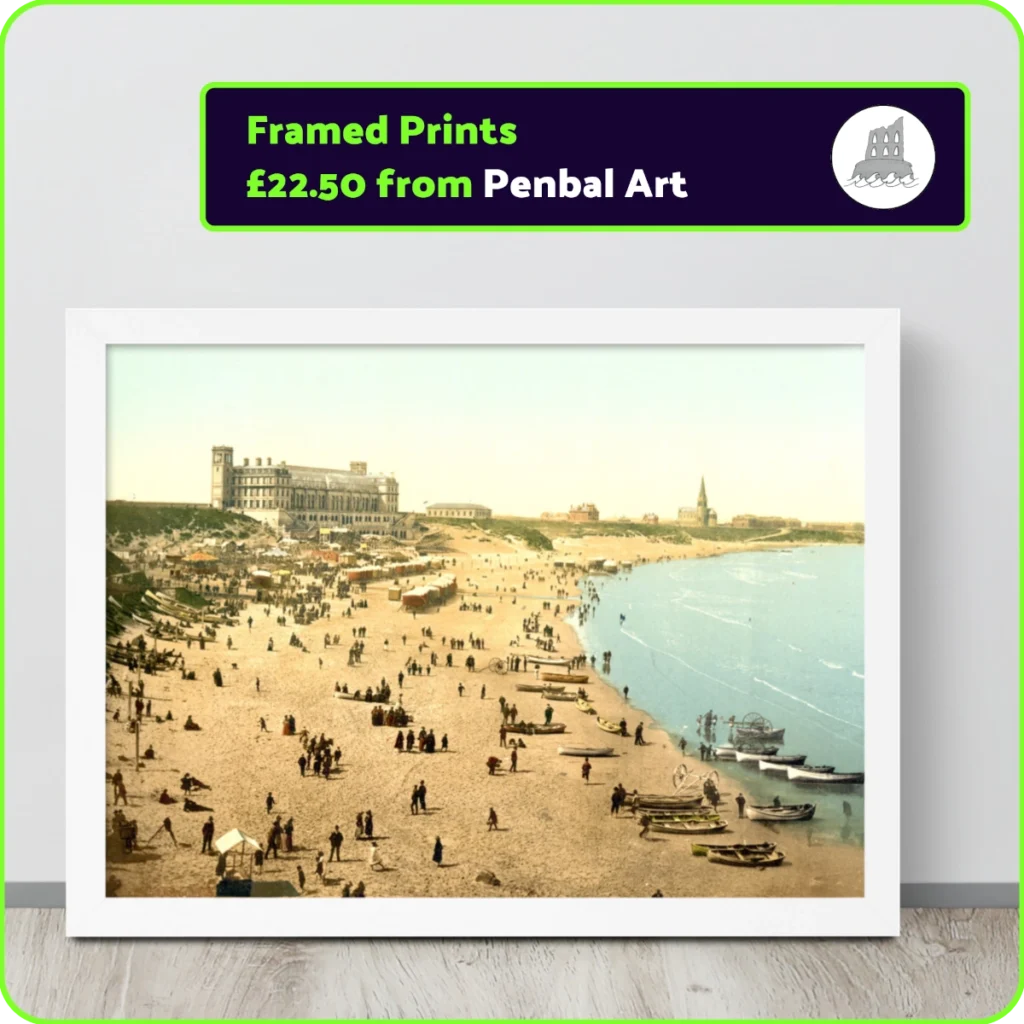Checking Out NEMT’s New Boat-Building Project
By Luan Hanratty
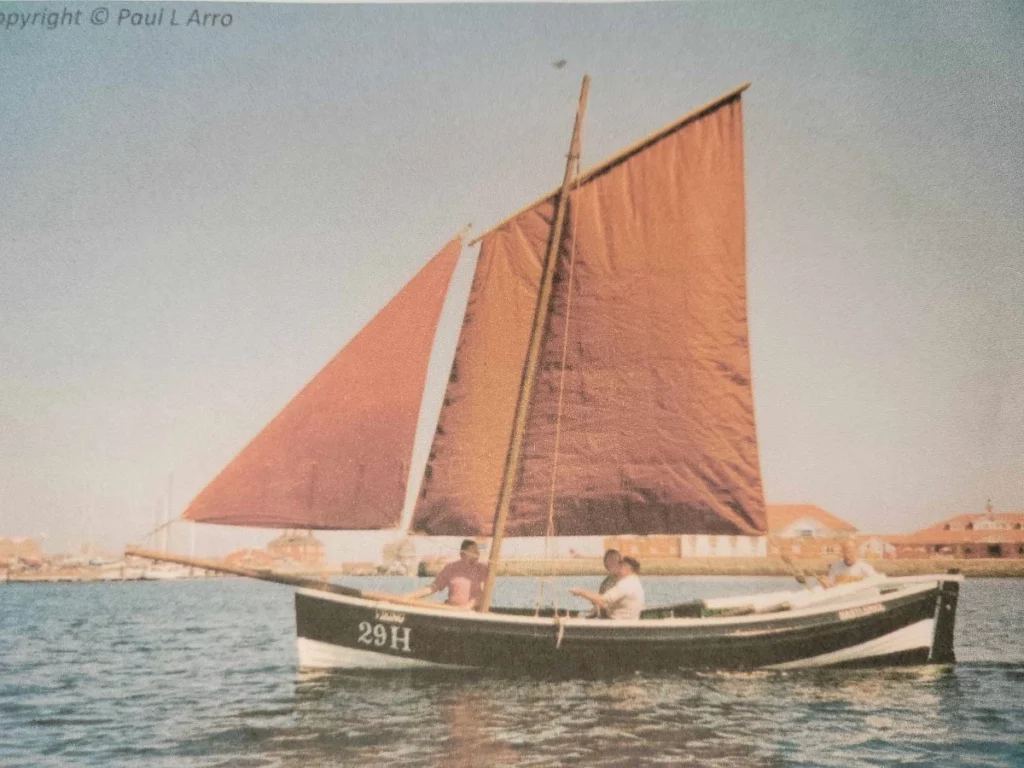
I caught up with the lads at the North East Maritime Trust at their boat yard at Satellite Quay on Wapping Street in South Shields.
The boat Viking is the latest in a line of prestgious projects the group have undertaken, preserving the region’s maritime heritage through expert boatbuilding skills and a passion for their craft, which is special to see in a town that is the birthplace of the lifeboat.
The name for this boat is particularly fitting as the origins of the famed coble — stalwart of fishermen along the east coast of Britain, and to an extent on the north coast of Ireland, is assumed to have its origin in the Viking longships that arrived on these shores in the 800s. Longships are distincive for being clinker-built — a style featuring overlapping hull planks, as opposed to the carvel-built boats found on the Altantic coasts of Europe.
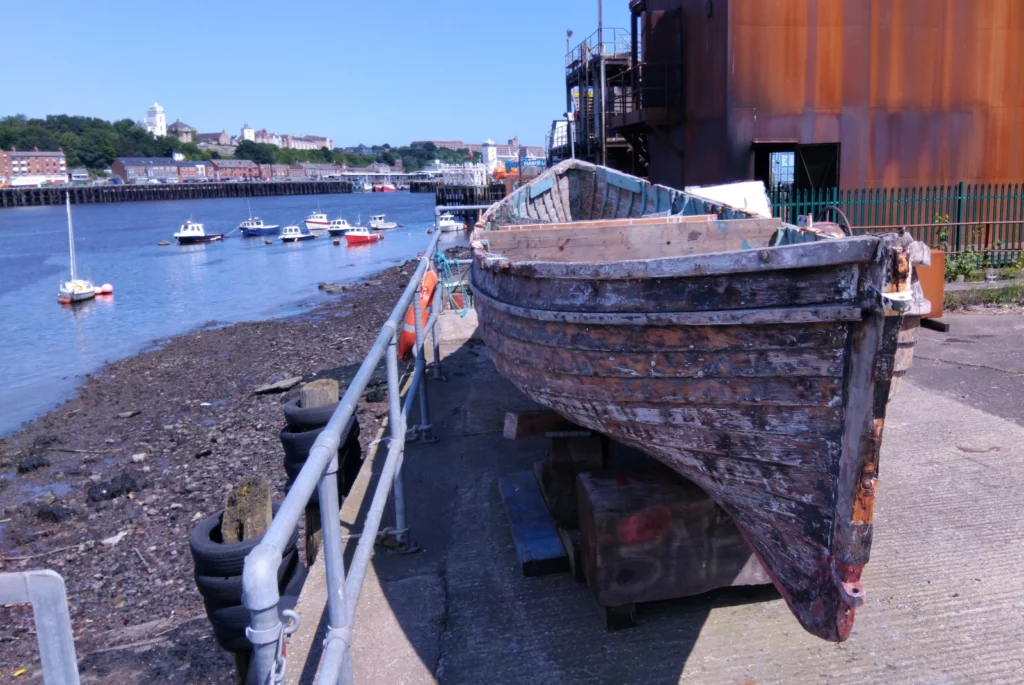
Viking is a double ended coble, with what could be described as a bow at each end. By contrast, the standard coble design has a flat stern or transom. So these double-ended cobles are a rarer style that were mainly found in Scotland and North Yorkshire, rather than Northumberland. They are also known as ‘mules’ because of their function as foyboats and workhorses of the waterways, but they are also very much an antique today and having served as a pilot boat, Viking may be one of the few remaining vessels of her type in the country.
Due the fact that cobles lack a pronounced keel, the advantage of this double-bow design is that it’s more manoeuvrable and having a wider beam, more stable at sea, while a standard flat stern coble, being more buoyant, is more suited to inshore fishing and easier to beach. It’s no coincidence that the sea-going Viking longships were of a double-bow design.
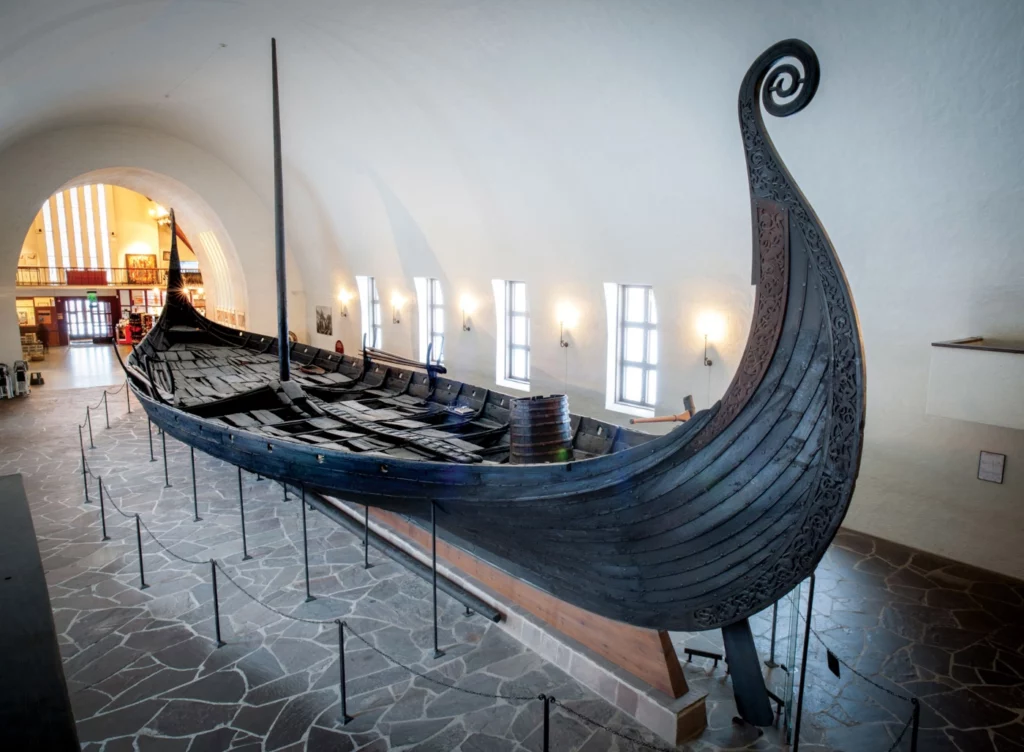
Viking has had a life of great service. She was built in 1908 and worked as a pilot boat out of Hartlepool. She was within an inch of being broken up and burned before the Trust rescued her last month, picking up the vessel from Hartlepool Council. Although it’s a big challenge, given time and following a thorough study, the Trust plan to completely refit her and grant her a new lease of life.
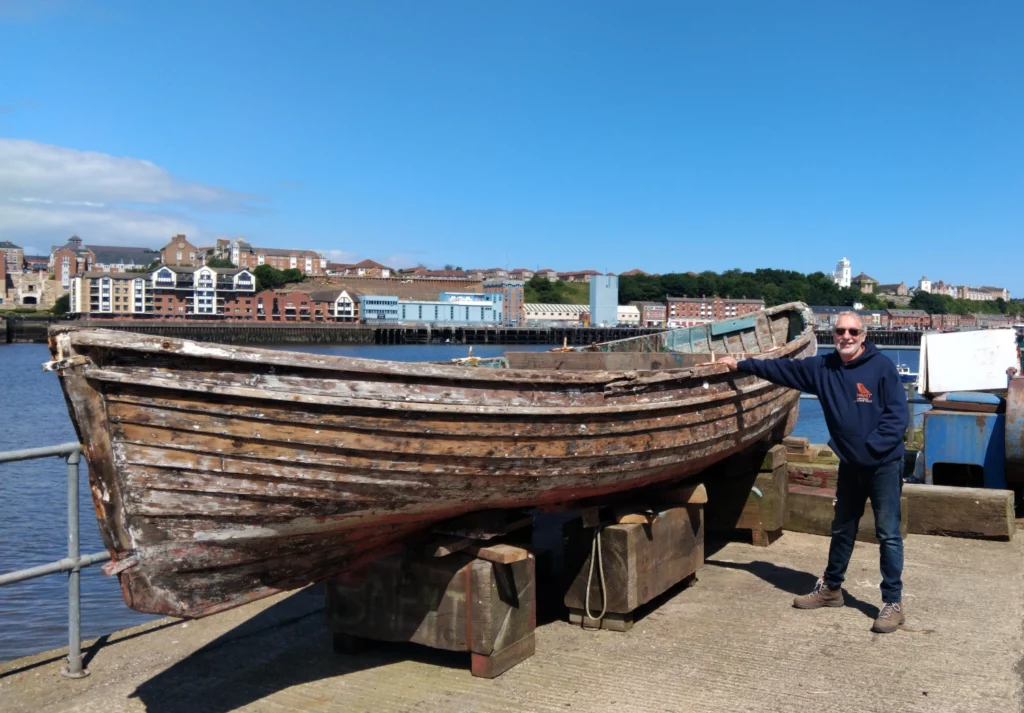
There are so many parts need replacing that Viking will quite literally become a Ship of Theseus, also known as ‘Trigger’s Broom’, whereby an object has been so comprehensively repaired over time that it no longer contains any of its original parts, yet is paradoxically still the same object. The story comes from a trireme the ancient Athenians preserved for hundreds of years to commerorate the journey by King Theseus to slay the Minotaur in the Labyrinth at Crete. It was pointed out by more than one cynical wit in the classical age, that the ship they celebrated each year couldn’t possibly be the same one that Thesus sailed in centuries earlier… Or could it be?
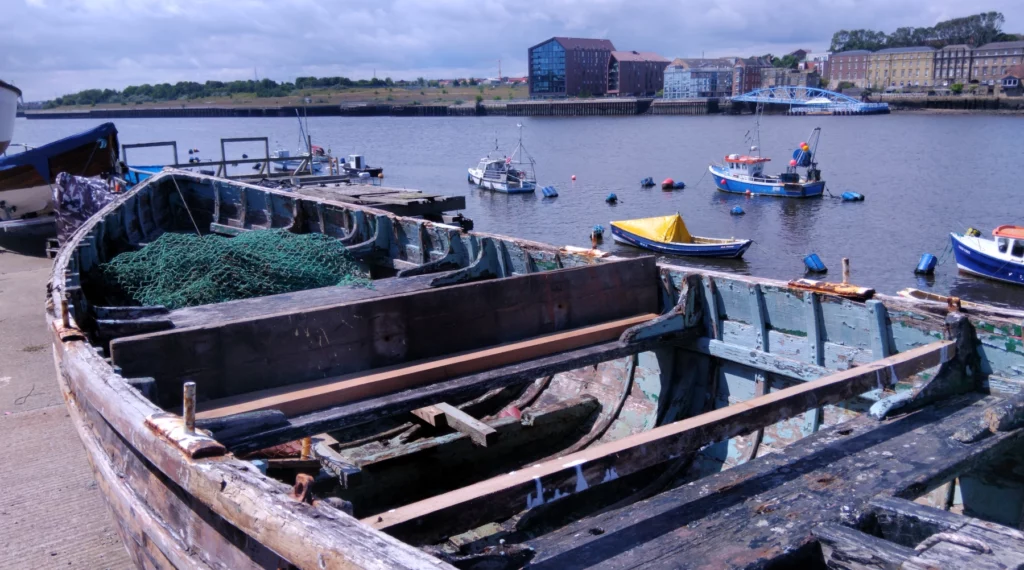
Viking, when restored with her gaff rig of crimson sail and black paint with white stripe, will be a sight to behold as she once again graces North East waters.
Further info:
“Many Hartlepool pilots favoured a mule, a double-ender, over a true coble and Viking is this class of boat. Built in 1908 by George Cambridge at Hartlepool, she was originally owned by the Towell family and built on similar lines to a fishing coble but lighter and faster. She was employed as a pilot boat until the 1920s when piloting ceased being competitive.
It is known she spent time at Seaton Carew where she was used in the salmon fishery, and it is there that she probably had her first engine installed. In the 1940s she was acquired by the Oliver family at Redcar and used for potting until it was deemed she was no longer suitable for that purpose.
Len Oliver contacted Frank Caldwell, the Curator of Hartlepool Museum, who sought funding from the Science Museum and Viking was bought for the town. When gear box problems occurred it was decided to return her to original and convert her back to sail. This work was carried out in 1992 by Dave Wharton and she was fully rigged for sailing. She was painted in the traditional pilot boat colour of black with her registered number of 29H on her bows.”
By Paul Arro for the Bridlington Sailing Coble Preservation Society
Local Awareness
Many people, even those who live local to the area, are not aware of the North East Maritime Trust and the great work they do preserving our heritage. So if you have a spare moment, why not pop down, meet the lads and take a look at their workshop and museum.
